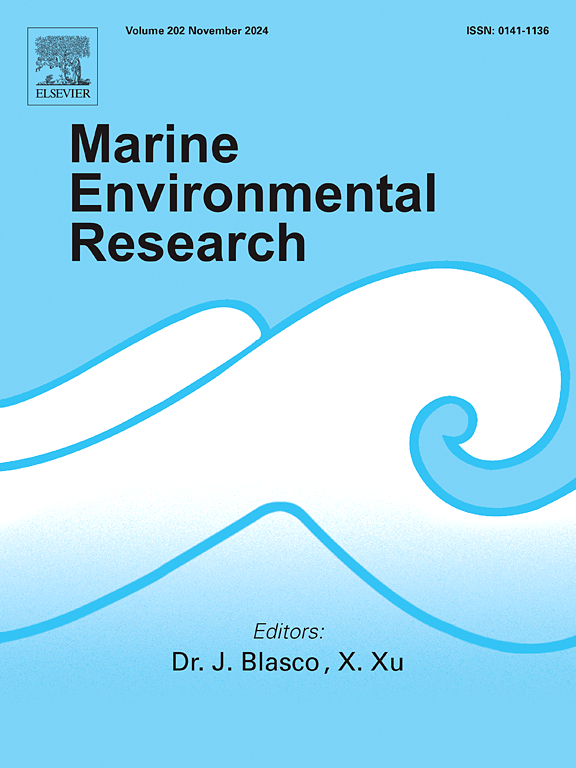Characteristics and environmental driving mechanisms of bacterial communities in the Bohai Sea
IF 3
3区 环境科学与生态学
Q2 ENVIRONMENTAL SCIENCES
引用次数: 0
Abstract
The Bohai Sea, a semi-enclosed marginal sea, hosts a diverse array of bacterial communities that play pivotal roles in marine biogeochemical cycles. However, understanding of bacterial communities remains fragmented in the Bohai Sea, with unclear links between environmental factors and key species, and limited insights into the roles of environment and space in shaping the bacterial communities. In this study, we compiled a series of data, and investigated how spatial and environmental factors influence the region’s distribution, assembly, and function of bacterial communities using high-throughput sequencing and statistical analyses. The results revealed that the bacterial communities in the Bohai Sea exhibited a high heterogeneity of spatial and environmental factors. Major drivers of community assembly included geographic location, nutrient availability (NO2-N, NO3-N, and NH4-N), temperature, and dissolved oxygen. Additionally, we found that the bacterial community structure in the nearshore waters of the Bohai Sea was distinctly different from that in the distant seas. Furthermore, we identified key bacterial species, including Marinimicrobia, Proteobacteria, Lentisphaerae, and Cyanobacteria that significantly contributed to community structure and function by random forest analysis. Notably, the abundance of Cyanobacteria was strongly correlated with environmental factors (NO2-N, NO3-N, and NH4-N), suggesting their potential as bioindicators of environmental change in marine ecosystems. More importantly, deterministic processes in the assembly of bacterial communities played a greater role than stochastic processes in highly polluted regions (BS3). The results of this research enhanced our understanding of the ecological processes governing bacterial community dynamics and provided valuable insights for monitoring and management marine ecosystem.

求助全文
约1分钟内获得全文
求助全文
来源期刊

Marine environmental research
环境科学-毒理学
CiteScore
5.90
自引率
3.00%
发文量
217
审稿时长
46 days
期刊介绍:
Marine Environmental Research publishes original research papers on chemical, physical, and biological interactions in the oceans and coastal waters. The journal serves as a forum for new information on biology, chemistry, and toxicology and syntheses that advance understanding of marine environmental processes.
Submission of multidisciplinary studies is encouraged. Studies that utilize experimental approaches to clarify the roles of anthropogenic and natural causes of changes in marine ecosystems are especially welcome, as are those studies that represent new developments of a theoretical or conceptual aspect of marine science. All papers published in this journal are reviewed by qualified peers prior to acceptance and publication. Examples of topics considered to be appropriate for the journal include, but are not limited to, the following:
– The extent, persistence, and consequences of change and the recovery from such change in natural marine systems
– The biochemical, physiological, and ecological consequences of contaminants to marine organisms and ecosystems
– The biogeochemistry of naturally occurring and anthropogenic substances
– Models that describe and predict the above processes
– Monitoring studies, to the extent that their results provide new information on functional processes
– Methodological papers describing improved quantitative techniques for the marine sciences.
 求助内容:
求助内容: 应助结果提醒方式:
应助结果提醒方式:


